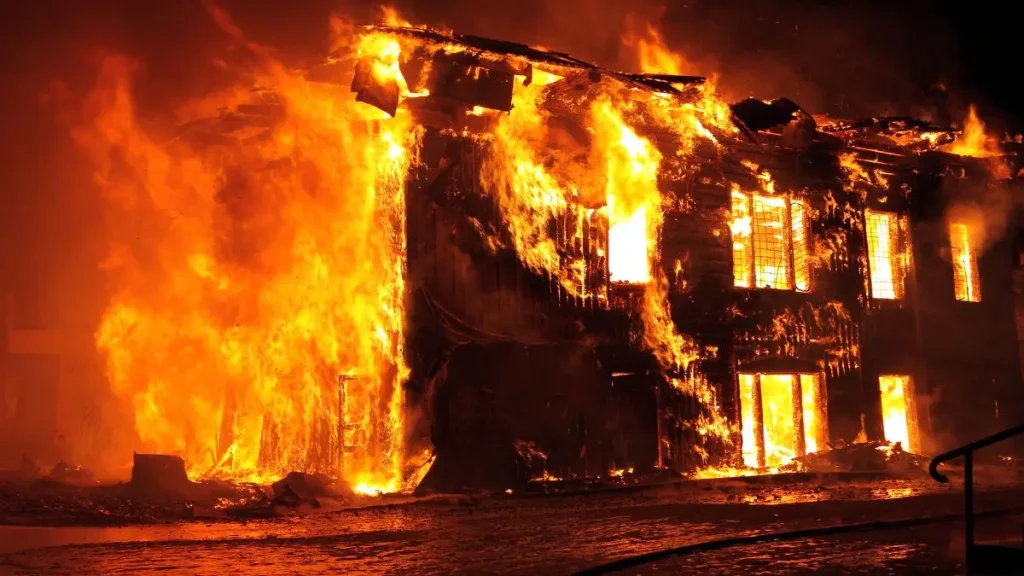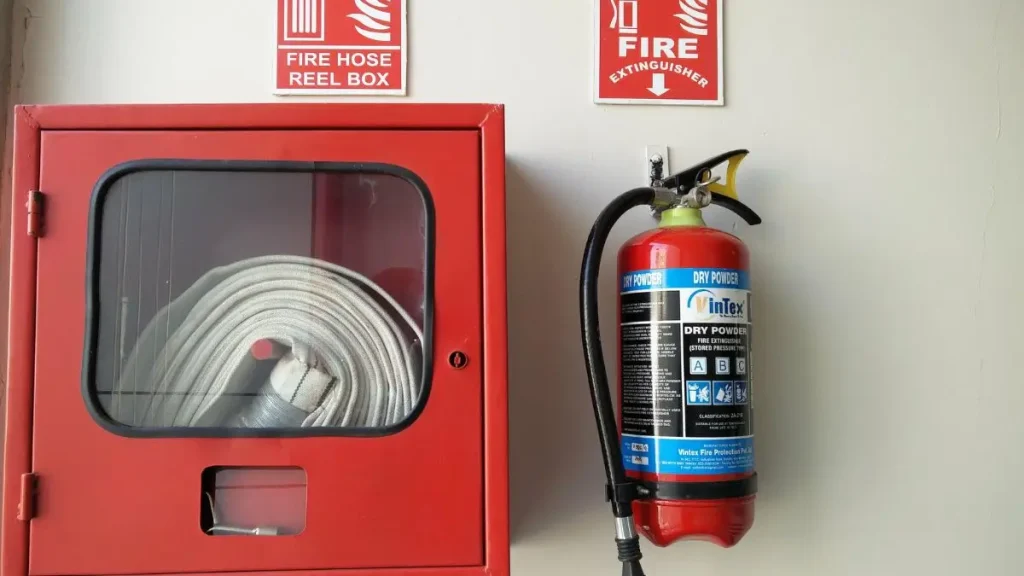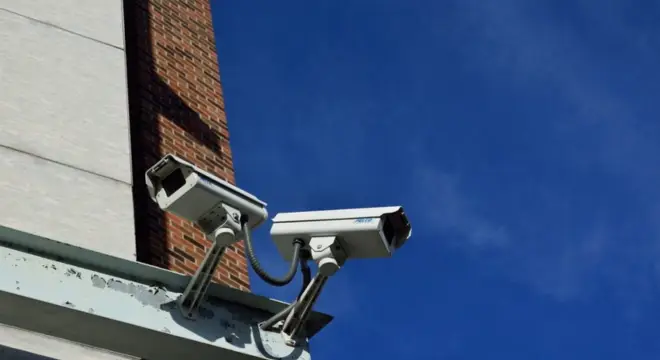Enhancing Home Safety: Key Takeaways from the Franklin County Fire Case
When we think of home, we imagine safety, comfort, and protection — a place where our loved ones and memories are secure. But sometimes, safety is taken for granted until it’s too late. House fires and home-related emergencies don’t just damage property — they take lives, break families, and leave behind painful scars.
What’s even more heartbreaking is that many such incidents could be prevented with the right security measures in place.
In an age of smart technology and affordable safety devices, the tools to protect our homes are within reach. Yet, many households still lack the basic fire safety features or integrated home security systems that could prevent disaster.
A recent tragedy in Franklin County serves as a painful reminder of why home security must go beyond just locks on doors — it must include fire prevention and early response systems too.
The Franklin County Tragedy: A Painful Reminder
In April 2024, a deeply disturbing incident shook the community of Franklin County, Kentucky. A teenage girl and her dog were found dead inside a burned-down home, a place that was meant to be their safe space. Even more shocking were the allegations that followed: the girl’s father was arrested and charged with arson, murder, and abuse of a corpse, pointing to a tragic and violent end that may have involved foul play and a deliberate fire.
According to WLKY, The State Journal, WHAS 11, neighbors witnessed smoke coming from the home in the early morning hours. Emergency crews arrived to extinguish the flames, only to discover the lifeless body of the girl and her dog inside. The investigation later revealed that the father was seen leaving the property shortly before the fire, and evidence pointed toward intentional ignition.
This heart-wrenching story is not only a case of suspected domestic violence — it’s also a powerful warning. Fires, especially when started intentionally or left unchecked, can become fatal within minutes. Without early warning systems or emergency response plans, the chances of survival drop drastically.
Where Most Homes Go Wrong with Safety

While we often worry about break-ins or theft, the truth is that many homes are far more vulnerable to internal threats like fire hazards. Small oversights — things as simple as not changing smoke alarm batteries or ignoring electrical issues — can lead to massive destruction.
Here are some of the most common ways homes fall short on basic fire safety and security:
- No smoke detectors in key areas: Many homes have smoke alarms, but not enough of them — or they’re placed in the wrong spots. Bedrooms, kitchens, and hallways should all have working alarms.
- Outdated or faulty wiring: Older homes often have electrical systems that haven’t been inspected in years, posing a constant risk of short circuits or sparks.
- Lack of fire extinguishers: Every home should have at least one easily accessible fire extinguisher — yet most people don’t own one, or don’t know how to use it.
- No smart home integration: Traditional alarm systems don’t detect fires or carbon monoxide. Modern systems can monitor heat, smoke, and even gas leaks — and alert you instantly via phone.
This combination of neglect and lack of preparedness turns an otherwise secure-looking home into a dangerous environment. In the Franklin County case, if fire detection systems or emergency alerts had been in place, the outcome might have been very different — possibly giving the victim precious minutes to escape or signal for help.
How Modern Home Security Systems Can Save Lives
Home security systems have come a long way from just being tools to deter burglars. Today, they are integrated platforms designed to protect your home from a range of threats — including fires, carbon monoxide leaks, and emergencies like break-ins or even medical alerts. In situations like the Franklin County tragedy, these systems may not only help detect trouble early but also send instant alerts that can save lives.
Here’s how modern systems go beyond traditional setups:
- Smoke and CO Detection: Many modern home security systems come with built-in smoke and carbon monoxide sensors. These devices don’t just sound an alarm — they can alert your phone and emergency responders even when you’re not home.
- 24/7 Monitoring Services: Smart systems with professional monitoring services can immediately contact fire departments or police when alarms are triggered — shaving off critical minutes in a crisis.
- Mobile Notifications: Whether you’re at work or on vacation, mobile alerts notify you of any unusual activity — smoke, movement, or a sudden temperature spike — allowing for faster decisions and actions.
- Integrated Smart Devices: Thermostats, lights, and security cameras can be programmed to react in emergencies. For example, smart lights can turn on to guide you during a fire, while cameras record and store crucial footage for investigations.
The key value here is early detection. Fires spread fast — sometimes in under two minutes. An integrated system gives your household a head start, and in some cases, it’s the difference between a close call and a fatal outcome.
This heartbreaking incident reflects a disturbing trend, as seen in our coverage of a woman shot dead during a suspected home invasion — a story that underscores the need for proactive security systems.
Home Improvements That Actually Increase Fire Safety

It’s not enough to have a home that looks modern — it must also be functionally safe. Improving fire resistance and emergency preparedness is essential for every homeowner, and thankfully, most upgrades are affordable and practical.
Here are fire safety upgrades every home should consider:
- Install Interconnected Smoke Detectors: These are alarms that trigger all over the house when one detects smoke. This ensures no delay in warning — even if the fire starts far from where your family is.
- Use Fire-Resistant Materials: When remodeling, opt for fire-rated drywall, treated wood, or metal roofing. These materials can slow down the spread of flames and give you more time to react.
- Schedule Annual Inspections: Hire a certified electrician to inspect wiring and outlets, especially in older homes. Also, get chimneys, gas lines, and furnaces checked regularly.
- Add Accessible Fire Extinguishers: Every floor of your home should have at least one extinguisher — especially in the kitchen, garage, and near heating appliances.
- Smart Fire Alarm Integration: Consider systems like Nest Protect or Ring Alarm that connect smoke and CO alerts directly to your phone, even when you’re sleeping or away.
- Escape Planning and Emergency Kits: Install escape ladders in upper floors, practice exit drills with your family, and keep emergency kits with flashlights, masks, and important documents ready.
The goal is to reduce reaction time. Each second saved by a smart detector, a fire-resistant wall, or a clear exit path increases your chance of staying safe. In a case like the Kentucky fire, even a 30-second head start could have created an entirely different ending.
The Bigger Picture: Creating a Holistic Safety Net
Home safety shouldn’t rely on a single device or precaution. It’s about creating a layered defense system — where prevention, detection, and response work together. This holistic approach ensures that no matter where or how a risk begins, there’s a system in place to manage it.
Here’s what a complete safety net might look like:
- Fire Prevention + Detection: Smart smoke detectors and heat sensors installed in all high-risk areas like the kitchen, garage, and bedrooms.
- Security Surveillance: Indoor and outdoor cameras with motion detection to monitor for unusual activity, which can be especially helpful in domestic abuse or arson cases.
- Access Control: Smart locks and door sensors that notify you when someone enters or exits your home — crucial for families with children, elderly, or high-risk individuals.
- 24/7 Emergency Connectivity: Systems connected to local fire departments and medical services that act automatically in a crisis.
- Family Preparedness: Routine safety drills, designated escape plans, and clear communication with everyone in the household about what to do in case of emergencies.
This multi-layered setup isn’t just about tech — it’s about habits and planning. Every home, regardless of budget or size, can benefit from combining practical routines with smart technology. Tragedies like the one in Franklin County are stark reminders that home safety isn’t a luxury — it’s a necessity.
Conclusion
What happened in Franklin County is devastating — a young life lost, a pet gone, and a community left shaken. Whether or not the fire was intentional, the fact remains: better safety systems may have made a difference. As homeowners, renters, or family members, we have a responsibility to not just secure our doors — but to protect every corner of our home from avoidable dangers.
Upgrading your home’s safety isn’t about paranoia. It’s about peace of mind. A few proactive steps — smart fire alarms, routine checks, and security upgrades — can save lives. Let this tragedy serve as a turning point. Because when it comes to home security, doing nothing is the real risk.
If this story made you pause, let it also push you to act. Whether it’s installing a smart smoke detector, upgrading your home security system, or simply planning a fire escape route with your family — every small step matters.
Your home should be your safest place. Don’t wait for tragedy to be the reason you start making it safer.
For more practical home security tips, real-life safety lessons, and improvement guides, visit our website BuildLikeNew.com — where safety and smart living go hand in hand.
Disclaimer: This article references a real-life incident as reported by verified public news sources to highlight the importance of fire safety and home security. The goal is to encourage awareness and provide readers with practical steps for improving home protection. We do not assume any investigative authority or make conclusions beyond what has been publicly shared. All recommendations are general and intended for educational purposes only.


